Agricultural Confined Spaces Glossary of Terms
This tool was developed by Purdue University’s Agricultural Safety and Health Department and can be duplicated for non-commercial purposes. For additional glossary terms related to agricultural safety and health see www.agsafetyforyoutinfo.

911 – The emergency system activated by dialing 911 on a telephone to call the police, fire department, or ambulance. The introduction of the 911 system has saved many lives by saving time in an emergency because people do not have to search for their local emergency phone numbers.
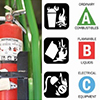
ABC Fire Extinguisher – an extinguisher that can be used for all types of fires. The “A” rating is for wood, textiles (material and clothing), paper, and rubbish. The “B” rating is for burning liquids, and the “C” rating is for electrical equipment. Use of an ABC-type fire extinguisher is recommended for tractors because tractor fires can be of any type.
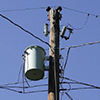
AC – an abbreviation referring to alternating electrical current. Electricity that arrives at a farm or ranch over transmission lines is AC or alternating current. Nearly all power tools that plug into a wall receptacle are powered by AC current. Contact with overhead wiring or power tools with faulty wiring may cause electrocution or death, especially in a wet environment.

Access Point – refers to the entrance into a confined space such as the top or side hatch or door on a corrugated steel grain bin, or the hatchway into a manure storage pit. Crossing the plane, or frame, of an access point is considered by OSHA regulations as the same as entering a confined space. On most grain bins, the top access door is approximately 24” in diameter.

Accident – an unexpected event with undesirable results. Accidents are not the same as injuries. Unexpected and undesirable events may occur that do not result in injuries but cause extensive property damage.
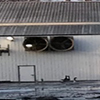
Aeration/Ventilation Fan – is used to push air into a grain storage structure to dry or condition grain. They usually consist of a large electric fan located at the base of the bin.
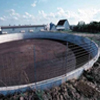
Agricultural Waste – includes a wide range of materials that are no longer considered of use or are the byproduct of agricultural operations. These materials include livestock manure, used bedding, crop residue, waste water, food waste, saw dust, and composted livestock remains. Most agricultural wastes are handled as either a slurry or liquid, or a solid, and are applied to crop land as a fertilizer or soil enhancer or conditioner. Agricultural waste has the potential of being contaminated with organisms that can pose a threat to humans and generate toxic gases as it decomposes.
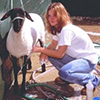
Age-appropriate work – work activities that are suitable based upon physical and mental capabilities. Operating a combine or bulldozer, or entering a grain bin or tasks manure pit, are not age-appropriate work for a seven-year-old child; feeding chickens or gathering eggs would be more appropriate. Check out information on age-appropriate tasks at www.marshfieldresearch.org/nccrahs.

Age Restriction – refers to a minimum age required to perform a work-related task. The U.S. Department of Labor has imposed age restrictions on youth employed to operate tractors, and youth under age 16 are not allowed to be employed to operate a chain saw, handle anhydrous ammonia, or work in a confined space. For age restrictions for employment in agriculture visit www.agsafety4youth.info.
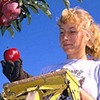
Agriculture – the industry that involves the production of crops and livestock, including agricultural services, forestry, and fishing. Farming, ranching, and commercial application of agricultural chemicals are examples of agriculture

Agricultural Employer – any person, corporation, association, or other legal entity that owns or operates an agricultural establishment; contracts with the owner or operator of an agricultural establishment in advance of production for the purchase of a crop and exercises substantial control over production; or recruits and supervises employees or is responsible for the management and condition of an agricultural establishment. For additional legal guidance, contact the State Department of Labor.

Agricultural Hazardous Occupation Order (AgHOs) – a term used by some organizations to identify an amendment to the 1938 Fair Labor Standards Act. See Hazardous Occupations Orders for Agriculture (HOOA).
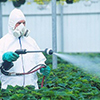
Airborne Particles – A solid or liquid material suspended in the air. Commonly found in agriculture in the form of dust, chemical spray, biological material, or other pollutants. These particles can irritate eyes, nose, throat, or lungs and pose minor to severe health risks. Respiratory protection should be worn when there is excessive exposure to airborne particles.

Alcohol – a chemical that when ingested or consumed, will affect human behavior, including coordination and response time. Just as with operation of motor vehicles, agricultural equipment operators should not be under the influence of alcohol because alcohol negatively affects reaction time and reasoning ability.
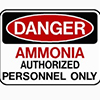
Ammonia – a chemical, which is a gas in its natural state, consisting of one molecule of nitrogen and three molecules of hydrogen (NH3). Ammonia has a sharp, pungent odor and is very irritating to the eyes, nose, throat, and lungs. Ammonia is widely used in agriculture as a fertilizer and is released as manure decomposes. Youth under 16 cannot be employed to transport, transfer, or apply anhydrous ammonia under the Hazardous Occupation Order for Agriculture (HOOA).

Anchor Point – an attachment point outside a confined space, such as on a grain bin, that a lifeline can be securely fastened. For full protection, the anchor point should have a tested capacity of 5,000 pounds, while for grain bin entry, the load capacity must not be less than 2,500 pounds. Most current grain bin components, including roof panels or ladders, do not provide an adequate anchor point that meets current safety regulations.

Angle Grinder – a hand held grinder used to prepare metal for welding and to smooth metal for surface finishing, including painting. Equipped with various types of abrasive wheels or disks, high speed grinders are commonly found in farm shops. Because they throw sparks and other debris at high speed, a face mask and eye protection should always be worn when operating these tools, and bystanders should be kept a safe distance away.
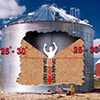
Angle of Repose – is the angle formed between the ground and the surface of a free-standing pile of grain. As grain is piled up, its characteristics cause it to flow down and reach a stable point. The drier the grain, or the smaller (corn vs. canola) the smaller the angle. For example, dry corn will form an angle 25-30°, while wet corn will form a steeper angle. Disturbing the base of a free-standing pile of grain can cause an avalanche that can bury bystanders.

ASABE—American Society of Agricultural and Biological Engineers – a society that promotes science and engineering in agricultural, food, and biological systems. The ASABE encourages research, education, and cooperation among its members; publishes technical reports; and develops standards, codes, formulas, and recommended safety practices. For example, the ASABE publishes safety standards for the SMV emblem, the proper use of guards on farm equipment to prevent operator injuries, and safe grain bin entry.

Asphyxiation – to become unconscious due to a lack of oxygen, which may result in death. Asphyxiation may occur in manure-storage pits, fruit-storage structures, and oxygen-limiting silos. Youth under age 16 are not allowed by federal law to be hired to work in structures such as silos that can be oxygen deficient or contain toxic gases.

Auger – a rotating metal spiral, usually inside a metal tube, that transports loose material such as grain and feed. Augers are also used at the inlet of combines, windrowers, and balers to pull the crop into the feeder housing. Guards are used on auger inlets and PTO drivelines to prevent operator entanglement in case of a slip or fall into the moving machinery
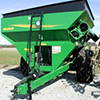
Auger Wagon – a wagon (similar to a gravity wagon) used to transport free flowing material such as grain or feed. An auger wagon is equipped with a powered auger unloading system designed to elevate and unload the material. These wagons are often used to transfer grain from a combine in the field to a grain truck parked on nearby roadways. Auger wagons present the potential for engulfment in flowing grain, as well as entanglement in powered components such as the PTO driveline and the auger.

Bacteria – simple-celled microorganisms that are found throughout the environment, including food, water, soil, plants, and human intestinal track. Some forms of bacteria are beneficial while others can cause serious disease including salmonella, and pneumonia. Livestock manure contains harmful bacteria.

Barrier – a guard such as a rail, fence, or frame. A fence around a farm pond or manure lagoon is a barrier that prevents or manure lagoon livestock entry and protects a wayward child from drowning. A rail or fence around a pasture or farm creates a barrier protecting both humans and animals from roadway collisions.
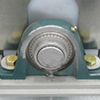
Bearing – A component in many machines that reduces rotational friction while supporting various dimensional loads. Bearings are commonly found in between wheels and the axle to allow for smooth rolling.
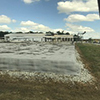
Bio-digester – an enclosed system designed to convert biowaste such as livestock manure, crop residue, and food waste into flammable gases that can be used as a fuel. Bio-digesters generally operate under pressure as gases such as methane and carbon dioxide are generated. The system usually contains one or more confined spaces and can pose a threat of asphyxiation if entered unprotected.

Bio-security – refers to the policies, and measures taken, for protecting a nation’s food supply and agricultural resources from both accidental contamination and bio-terrorism. The federal government is now increasing its efforts to improve bio-security to prevent bio-terrorism. Limiting access to livestock areas and use of disposable boots are two ways to enhance bio-security.
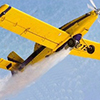
Bio-terrorism – deliberate attacks of bio-terrorism might include such acts as introducing a substance intended to kill food crops; spreading a virulent disease among animal production facilities; and poisoning water, food, and blood supplies. Bio-terrorism is now viewed as an emerging threat. See Bio-security.
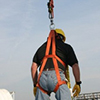
Body Harness – a form of personal protective equipment that is designed to prevent or reduce the severity of falls in the workplace. They are worn by roofers, construction workers and others who work in high places. They are also required by OSHA to be worn by some workers who enter confined spaces such as grain bins to prevent entrapment. For more information on uses visit www.OSHA.gov.

Bump Cap – protective head gear without an interior suspension system that is designed to protect the head from minor impacts. A bump cap should be used when repairing machinery to prevent bumps on the head but should not be used where the possibility of heavy falling objects occurs.
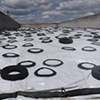
Bunk Silo – a structure found on farms to store large quantities of silage with access at ground level. A bunk silo is fabricated with a flat smooth floor (often concrete), two side walls, and usually a “back” wall. The space between the side walls is filled with chopped forage, which is packed into a dense mass to remove oxygen and covered with plastic to allow natural fermentation. These structures can allow the silage to be piled 20-40 feet high with the capacity for hundreds of tons of silage. The silage can be easily removed with a large front-end loader. Injuries around these structures have been caused by falls, overturns of packing equipment, and being buried under avalanches from the face of the silage. Workers should never approach the face of the silage during unloading.

Bystander – a person present at or near a farm or ranch worksite who does not actually participate in the work. Children should not be allowed in the vicinity of operating farm machinery as injury or death may occur to unsuspecting bystanders.
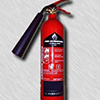
Carbon Dioxide – a colorless, odorless, non-toxic gas formed during the combustion of many fuels or the fermentation of crops. Its chemical formula is CO2. It is heavier than air. Although non-toxic, it may replace the oxygen consumed during combustion or fermentation in an enclosed environment, causing health problems associated with oxygen deficiency or even death. Carbon dioxide is used to make dry ice and as an extinguishing agent in some fire extinguishers.
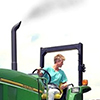
Carbon Monoxide – a colorless, odorless, and toxic gas formed during the incomplete combustion of many fuels. Its chemical symbol is CO. Carbon monoxide inhibits the absorption of oxygen into the bloodstream and may cause headaches, nausea, sleepiness, and death. Operating a tractor or high-pressure washer inside a closed building may lead to a dangerous build-up of carbon monoxide.

Caustic – a characteristic of a material to eat away or burn by chemical action. Anhydrous ammonia and drain cleaners are caustic chemicals. Flushing with water is an appropriate first aid response for skin exposure to caustic materials such as anhydrous ammonia.

Caution – indicates a potentially hazardous situation that, if not avoided, may result in minor or moderate injury. It can also be used to alert against unsafe practices. Caution signs are typically black and yellow.
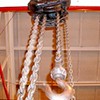
Chain Hoist – a device used to lift heavy objects by means of a long chain and multiple pulleys. Before hanging a chain hoist in his or her shop, a farmer must ensure that the overhead mount is strong enough to safely support the load capacity of the hoist. All chain hoists should be labeled with their maximum load capacity.
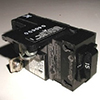
Circuit Breaker – a device in an electrical circuit that deactivates the power supply if the circuit fails or becomes overloaded. A circuit breaker helps prevent fires from overloaded circuits. Circuit breakers have replaced screw-in fuses on most farms.
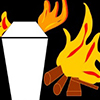
Class A Fire – a fire involving wood, textiles (material and clothing), paper, or rubbish. The smoke from a Class A fire may be extremely hazardous if chemically treated lumber is involved. Class A fires are generally extinguished with water. The universal symbol associated with Class A fires is a triangle with the letter “A” inside it. Most farm and ranch fires are Class A.

Class B Fire – a fire involving burning liquids such as gasoline or oil. Water must not be used on a Class B fire because it may cause the fire to spread. Class B fires are extinguished with CO2, dry chemical, foam, or Halon agents. The universal symbol associated with Class B fires is a square with the letter “B” inside it. Fire extinguishers with a Class B rating should be located near fuel storage facilities.

Class C Fire – a fire involving electrical equipment. Water must not be used on a Class C fire because of the electrical shock hazard. Class C fires are extinguished with CO2, Halon, or dry chemical agents. The universal symbol associated with Class C fires is a circle with the letter “C” inside it.

Class D Fire – a fire involving combustible metals such as: magnesium, sodium, potassium, zirconium, titanium, lithium, aluminum, and uranium. Water and other conventional fire-fighting agents can intensify Class D fires. Class D fires are best fought by a DRY POWDER extinguishing agent, which must not be confused with DRY CHEMICAL agents found in many common fire extinguishers. The universal symbol associated with Class D fires is a star with the letter “D” inside it.
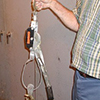
Come-A-Long – also called Power-Pull – a device with a cable, two hooks, handle, and ratcheting mechanism used to pull or tie down heavy objects. A come-a-long must be inspected frequently for damage to its cable, hook, and pulley components to prevent injury to the user.

Communication Device – any device that people use to communicate, such as: telephone, cell phone, business-band radio, citizens-band radio, and walkie- talkie. In case of injury, a communication device to call for help can be a lifesaver for a farmer working alone.

Compressed Air – air under pressure which can be used to power air tools, inflate tires, and clean parts. Regulations require that air pressure at a nozzle for cleaning parts must be reduced to 30 pounds per square inch (psi) to prevent injury from flying debris. Eye protection should always be worn when cleaning parts with compressed air. Compressed air tanks should be equipped with a pressure relief valve to prevent over pressuring and exploding.
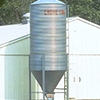
Confined Space – a space that is large enough that an employee can enter and perform assigned work, but has limited or restricted means for entry, and is not designed for continuous employee occupancy. Asphyxiation and entrapment can occur in confined spaces such as tanks, silos, grain bins, feed hoppers, and manure pits on farms and ranches. If you need to use your hands to enter a space, it is most likely a confined space. For more information on the hazards of agricultural confined spaces visit www.agconfinedspaces.org.

Confined Space Entry Permit – is a written document that is prepared and approved prior to entering a recognized confined space. It is designed to ensure that all precautions have been taken prior to a worker entering a confined space. These permits are not required, but advisable in most agricultural workplaces.
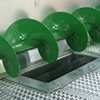
Conveyor Screw – the rotating metal spiral in an auger. A conveyor screw may cause serious entanglement and amputation if all shields and guards are not kept in place. Augers are used on many farms to transport granular material. See Auger and Portable Auger.

CPR—Cardiopulmonary Resuscitation – a procedure that applies a series of alternating chest compressions and assisted breathing cycles for a person whose heart and breathing has stopped. If CPR is not started within four minutes after the heart and breathing have stopped, serious brain damage may occur. Most local hospitals and the American Red Cross offer training to perform CPR. Every farm or ranch should have someone trained in CPR. See www.redcross.org.
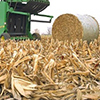
Crop Residue – the portion of plant material or crop left in the field after harvest. Crop residue helps prevent soil erosion but provides a ready source of fuel for field fires. Crop residue can also build up on equipment such as combines and be ignited. Daily cleaning should be done to remove crop residue.
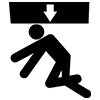
Crush Point – a location on machinery where a person or body part could be crushed. The area below the bucket of a skid steer loader or combine header is a crush point, but using the header support safety locks will prevent crushing injuries. Appropriate jack stands should be used to support equipment when working under it.

Crusted Grain – when grain is stored at too high a moisture content, or moisture is allowed into the storage structure such as through leaks in the roof, the grain can spoil or go out of condition. This spoilage causes the grain to clump together to form crusted surfaces or large chunks that can stick to the wall and block the flow of grain. Out-of-condition grain is the most significant contributing factor to grain entrapment.
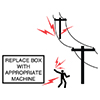
Current – Electrical current, measured in amps, is the flow of electrons, often through a wire. Overloading electrical circuits poses a safety/fire risk by the heat generated from the electrical current.

Cutting Point - a location on machinery where the danger of getting cut can occur. The sharp edge of replaceable points, shovels on tillage implements, and the knives on forage harvesters are cutting points that must only be handled with protective gloves. The use of razor knives to cut open sacks and to remove the strings or netting from round bales is another source of being cut.

Danger – indicates an imminently hazardous situation that, if not avoided, will result in death or serious injury. This signal word is limited to the most extreme situations, typically for machine components that for functional purposes cannot be guarded. Danger signs typically have a red background.
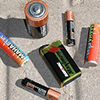
DC – an abbreviation for direct electrical current. Tractors and other off-highway equipment with batteries operate by DC or direct current; and even though they are usually rated at only 12 or 24 volts, electrical shorts still can cause operator burns and equipment fires. Flashlights operate on DC.

Decibel – a unit used to measure the intensity of sound. A sound level of 130 decibels will cause physical pain in the ears of most individuals. A noisy lawnmower or tractor produces about 100 decibels of sound. To prevent permanent hearing loss, ear protection should be worn when operating equipment that produces more than 85 decibels for long periods of time.

Disease – When a human, animal, or plant does not function as it should, or becomes impaired. Disease can be caused by other living organisms such as viruses and bacteria, or the result of genetic anomalies.

Disinfectant – A chemical used to sanitize or disinfect surfaces that may harbor harmful organisms such as viruses and bacteria. Agricultural producers who grow or sell food crops need to give attention to disinfecting any tools, equipment, or surfaces that come in contact with food.
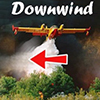
Downwind – being in a position that is in the opposite direction from which the wind is blowing. When spraying chemicals or working in a dusty setting, being downwind from the source can increase exposure. No one should be allowed to be in an area where he or she could be exposed to windblown chemicals, or chemical drift.
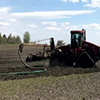
Dragline Manure Application Equipment – a system that allows for the application of liquid manure through hoses wrapped on a large portable spool. Liquid manure is pumped under pressure from a transport tanker, through the hose to a reel and then to a vehicle mounted applicator that injects the manure into the soil.

Electrocution – the act of causing death by electrical shock. Working with electrical equipment in a wet environment increases the risk of electrocution. A frequent cause of electrocution on farms occurs when portable grain augers come into contact with overhead power lines.

Emergency – a situation that calls for immediate action. Loss of consciousness, heavy bleeding, and fires are three types of farm emergencies. Being prepared for an emergency by posting the phone numbers for local fire department, police department, hospital, and poison control center can save lives. Completing a basic first aid class can also help prepare for a medical emergency.

Emergency Medical Services—EMS – the medical services provided by paramedics, first responders, EMTs, and emergency rooms in hospitals. Because of the remote location of many farms, the response time of the EMS may be quite long. Knowing basic first aid is important for providing assistance while waiting for the arrival of EMS and may prevent serious complications from injuries.
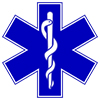
Emergency Medical Technician (EMT) – a trained first responder who is able to provide emergency medical treatment until the injured person reaches the hospital. Many EMT’s in rural communities are volunteers.
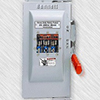
Enclosure – a guard that provides protection on all sides of a hazard. A circuit breaker box row, which is an enclosure that provides protection from electrical shock, should be kept locked to prevent unautho-rized access. Other forms of enclosures include guarding around a grain bin ladder or a stub shaft shield over the tractors PTO.

Engulfment – becoming completely trapped in flowing material such as grain or feed. Grain engulfment can occur very quickly during the unloading of grain bins, gravity wagons, and grain trucks. Consequently, no one should be on the grain surface when unloading equipment is operating. Youth under age 16 are not allowed by federal law to be employed to work inside a grain bin. To learn more visit www.agconfinedspaces.org.

Enhanced 911 – an improved version of basic 911 service that displays the telephone number and address of the emergency call location to the dispatcher. If a person becomes hysterical or unconscious after dialing 911, the dispatcher can still send emergency personnel to the address if the local dispatch has an enhanced 911 system.

Entrapment – is when a person is unable to self-extricate from a flowing material such as grain, silage, fertilizer, sand, or soil. When a person is entrapped above his waist, in most free-flowing materials, it is unlikely that he or she would be able to free themselves. When a person is completely buried beneath the surface of a material, the term engulf-ment is generally used. Entrapped victims are usually freed by removing the impacted material from around their body using a coffer dam or grain rescue tube.

Environmental Protection Agency (EPA) – a federal regulatory agency responsible for implementing and enforcing rules designed to protect the environment. Manure storage, transport, and application may be regulated by EPA regulations. Of special concern are events that allow agricultural waste to enter bodies of water. In some cases, EPA rules may apply to air quality issues caused by livestock waste odor.
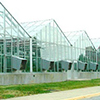
Environmentally Controlled – refers to conditions in a structure where the temperature, humidity, and/or the gases in the atmosphere are controlled. Fruits and vegetables are often stored and ripened in environmentally controlled rooms that can be hazardous to workers who enter due to low oxygen levels. Greenhouses are environmentally controlled to allow for optimum growth of plants.

Ergonomics – the study of human characteristics for use in designing tools, work and living environments, clothing, and other items used by humans. Tractor manufacturers use ergonomics to design tractor seats and operator controls that are more comfortable and less fatiguing.

Exhaust – the gases, liquids, and particles formed during the combustion of fuel and released into the atmosphere. The exhaust from motor vehicles, tractors, and planes contains many chemical compounds that are hazardous to human health and to the atmosphere. Carbon monoxide is a toxic gas given off during tractor operation.
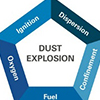
Explosion – an explosion requires four elements or ingredients: fuel, oxygen, ignition source, and containment. The most widely recognize type of explosion in agriculture is dust explosions, which generate considerable force and can do great damage. Explosions can also occur due to leaking propane or natural gas inside farm buildings, or a buildup of methane or manure gas in livestock confinement buildings. Gasoline vapors in the correct proportion can burn so fast that it appears to be an explosion. Explosions can cause severe burns almost instantly due to the high temperatures involved.
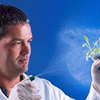
Exposure – a circumstance in which a person comes into contact with a hazard that can result in injury or disease. To reduce the level of exposure to pesticides, personal protective equipment such as gloves, safety goggles, and disposable coveralls should be worn. One good protection from exposure is frequent hand washing.
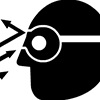
Eye Protection – personal protective equipment designed specifically to protect the eyes. Eye protection, such as goggles or safety glasses, should always be worn when handling pesticides, grinding metal, welding, or sawing.

Fair Labor Standards Act – a federal law governing worker safety and benefits, such as overtime pay, minimum wage, child labor, and equal pay for equal work. Most hourly workers are governed by this law, but there are some exceptions. For example, many truck drivers and railroad workers are not covered by this law, and many agricultural workers are not covered by the overtime pay regulations of this law. Check with the State Department of Labor to learn more about applicable regulations, or visit www.OSHA.gov.
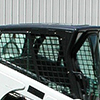
Falling Object Protective Structure— FOPS – the overhead protection system used to prevent objects from falling on the operator of agricultural, construction, and industrial equipment. A FOPS consists of a post structure with a roof made of solid or mesh material. Most skid steer loaders used on farms today are equipped with FOPS.
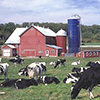
Farm – a plot of land and/or buildings used to raise crops and/or livestock. The U.S. Department of Agriculture considers any place that produces and sells over $1,000 worth of agricultural products each year to be a farm.
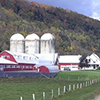
Farmstead – the buildings and adjacent service areas of a farm. A farmstead often consists of a home, storage buildings, shop, and livestock buildings. The space or area surrounding the buildings is often referred to as the farmyard.

Fatigue – mental or physical exhaustion that causes extreme tiredness or weariness during and after lengthy or strenuous physical or mental activity. Many farmers and farm workers become fatigued during harvest season due to working long hours trying to get the crop in from the field. Fatigue often contributes to human error and injuries. Workers require adequate rest to be safe when performing hazardous jobs.

Fermentation – The process in which sugars are converted into ethyl alcohol, such as the production of grape juice into wine, or corn into whiskey. Fermentation also occurs in the production of silage for a more palatable and digestible livestock feed in the confines of a silo or bunker. The process of fermentation produces harmful gases.
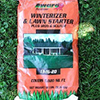
Fertilizer – a substance such as manure or a chemical mixture that provides nutrients to plants. Potash, phosphate, and nitrogen are the three most common fertilizers. Some fertilizers such as anhydrous ammonia require special handling in order to prevent injuries.

Fire Triangle – A model to help understand how a fire works. The three sides of the triangle represent the needed ingredients for fire – Oxygen, Heat, Fuel. Without any one of the ingredients, a fire is not possible. The Fire Triangle can be used to help people better understand how to prevent harmful fires on the farm.

First Aid – medical treatment given to a person with minor injuries or illness, or the initial treatment provided before professional medical personnel arrive to treat major injuries or illness. Bystanders often provide lifesaving first aid to injury victims before the ambulance arrives. Many hospitals and the American Red Cross offer basic first aid training.
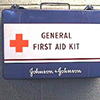
First Aid Kit – a portable package containing bandaging materials, antiseptic, and other medical supplies. First aid kits should be located in farm and school shops and be carried in farm tractors so that immediate medical care can be provided in case of injury.

Flammable – capable of being easily ignited and burning quickly. Gasoline is highly flammable and should never be used as a cleaning solvent or to start fires because explosions and serious burns can occur. Gasoline should be transported in well-marked red containers.

Flash Point – the lowest temperature of a liquid at which its vapors will ignite in air when exposed to a flame. Gasoline is much more explosive than diesel fuel because the flash point of gasoline is a much lower temperature than that of diesel fuel. Safety Data Sheets contain flash point temperatures for all substances.

Forage – grass, corn, and other roughage crops used for animal feed. Fermenting forage can release carbon dioxide, nitrogen oxides, and other silo gases that are very toxic to man and animals.

Free-Wheeling Component – a part of machinery that continues to operate or coast after the power source to the machinery has been shut off. Mower blades on rotary mowers and flywheels on balers are dangerous because they are free-wheeling components that can cause injury even after the tractor is shut off.

Front-End Loader – a loader attached to the front end of a tractor that is used to load or move dirt, stone, manure, feed, and other loose materials. When the bucket of a front-end loader is raised, the center of gravity of the tractor moves higher, reducing stability and contributing to side overturns. To increase stability, tractors equipped with front-end loaders are often equipped with additional ballast.
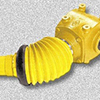
Fully-Shielded Driveline – a PTO driveline that has all components shielded on all four sides. Fully-shielded drivelines are the safest because they make it nearly impossible for a farmer to make contact with the revolving shaft and become entangled.
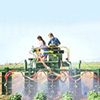
Fumigant – a chemical compound used in the gaseous state as a pesticide or disinfectant. Fumigants, such as methyl bromide, that are used to kill insects in grain are so dangerous that the applicator must be trained and must possess a special fumigant license. Youth under age 16 are restricted by federal law from handling or applying restricted use fumigants and other chemicals labeled with the words DANGER or WARNING.
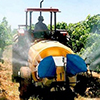
Fungicide– a product used to kill a fungus or inhibit its growth. Fungicides are used on many fruit crops to control fungal diseases. Youth under age 16 are restricted by federal law from handling or applying restricted use fungicides and other chemicals labeled with the words DANGER or WARNING.
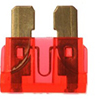
Fuse – a “weak link” in an electrical circuit that is designed to fail if the circuit becomes overloaded and begins to heat up. All electrical circuits on the farm or ranch should be protected against overloading. Most modern fuses are load-sensitive circuit breakers. However, on many farms, screw-in fuses are still common. If a fuse fails repeatedly, it is a sign of a serious fault in the circuit that can cause fire if not corrected. See Circuit Breaker.

Gas Meter/Analyzer – a device used to measure various gases in the immediate area. Most analyzers are designed to detect gases that are toxic to humans such as hydrogen sulfide, carbon monoxide, carbon dioxide, methane and ammonia. They are also used to ensure the presence of an adequate level of oxygen. According to current OSHA regulations, the quality of air inside a confined space should be tested for toxic gases before a worker enters for any reason. Most farms, however, do not have access to a gas monitor, which contributes to the high frequency of asphyxiations that occur on farms in manure pits, silos, and grain storage.
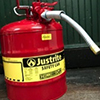
Gasoline – a highly flammable petroleum fuel used to operate internal combustion engines. Gasoline should only be transported in approved safety cans that are red in color and clearly labeled. When mixed with the right amount of air, one gallon of gasoline has several times the explosive force of dynamite.

GFI—Ground-Fault Interrupter – an electrical circuit breaker that senses the difference between the electrical currents flowing through the hot and neutral wires of an AC circuit. When it senses a difference, it trips very rapidly (in about ten milliseconds) thus preventing a serious electrical shock if a person is touching an energized part of the circuit. GFIs are required by building codes in bathrooms and outdoor receptacles where water or moisture is likely to be present. Farm shop receptacles should be equipped with GFIs.
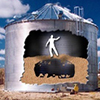
Grain Bridge – a layer of spoiled grain at the top of a grain bin. When grain is unloaded from the bottom of the bin, a spoiled layer at the top can remain in place without any supporting grain beneath it, thus forming a bridge. An unsuspecting worker who walks on this bridge may fall through and become buried in the collapse of grain.
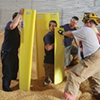
Grain Rescue Tube – a devise used by trained emergency first responders to form a cofferdam around a grain entrapment victim. It is designed to provide a way of separating the victim from the pressure of the surrounding grain. These forces on the victim prevent him or her from being pulled from the grain without injury. See Engulfment. To learn more visit www.agconfinedspaces.org.
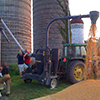
Grain Vacuum Machine – a heavy duty vacuum machine used to pneumatically remove or transport grain. They are usually portable and come with various capacities such as 1200-2000 bushels per hour. These machines are often operated off the PTO of the tractor. Improper use of these machines can result in flowing grain entrapment.

Gravity – a fundamental law of physics that explains the attraction of objects to the earth. Here on earth, the force of gravity causes all objects to be pulled toward the center of the earth (creating weight) and consequently, prevents humans from falling off the earth. The force of gravity causes a combine header to fall in the event of hydraulic hose failure. Falls are one of the most common type of injury for farm workers.
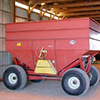
Gravity Wagon – a wagon designed to transport free-flowing grain that unloads using only the forces of gravity. These wagons, widely used to transport grain between the field and grain storage sites, can range in capacity from under 100 bushels to nearly a 1,000 bushels.

Grinder Mixer – a farm machine used to grind feed for livestock and mix nutritional additives with the feed. To prevent injury farmers must avoid contacting any of the operating components of a grinder mixer. It uses rapidly-rotating knives or hammers to grind feed into a powder-like consistency and augers to move the finished feed.

Grounding – the procedure of connecting a wire in an electrical circuit to the earth – usually by an eight-foot copper ground rod driven into the soil. Grounding makes using electrical devices safer because a broken or bare energized wire that contacts any grounded part will deactivate the circuit breaker, thus preventing a fire or electrical shock.
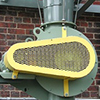
Guard – a device used to protect a person from a hazard. There are three types of guards: shields, enclosures, and barriers. To prevent entanglement injuries, shields over belts, pulleys, and PTO components should always be replaced after removal for maintenance of the machine.
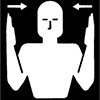
Hand Signals – motions made with the hands to communicate messages to another person. Hand signals are often used by 2 farm workers who are in an environment that is too noisy to communicate by voice. Hand signals used properly can also be used to summon help in an emergency.

Hand Washing – is absolutely essential following work activities involving livestock waste. One of the quickest paths for a harmful organism to enter the body is through the mouth from contaminated hands. All agricultural workers should have access to hand washing facilities.

Hard Hat – a protective helmet designed to protect workers from falling objects. Hard hats are worn on almost every construction site to comply with OSHA workplace safety standards. However, they are rarely seen on agricultural worksites. The use of hard hats in agriculture would prevent many serious head injuries that occur each year.
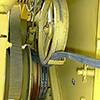
Hazard – anything that can cause injury or harm. The many hazards associated with farm work make the farming industry one of the most dangerous of all industrial occupations. An example of a hazard is an exposed belt or chain during operation.

Hazardous atmosphere – is when the air that a person is expected to breathe becomes contaminated with toxic fumes or gases. The space above the surface of an upright silo can become contaminated with nitrogen dioxide, or silo gas, that can make the space toxic to a worker. Potentially hazardous atmospheres should be tested for the presence of toxic gases prior to entry.

Hazardous Occupations Order for Agriculture (HOOA) – the term HOOA is used in the GEARING UP FOR SAFETY curriculum to identify the portion of the Fair Labor Standards Act that applies to the employment of children and youth in agriculture. See Agricultural Hazardous Occupations Order (AgHOs). To learn more about the provisions of HOOA visit www.agsafety4youth.info or www.OSHA.gov.
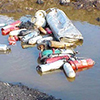
Hazardous Waste – any solid, liquid, or contained gaseous material that is no longer used or needed, which has the potential to cause injury or death, or pollute the environment. Used oil from a tractor is a hazardous waste and should be disposed of properly by recycling; it should never be dumped on the ground or used to suppress dust around the farm.

Health – the absence of disease or injury. A farm worker should make positive choices to protect his or her health, such as using personal protective equipment, avoiding smoking that causes heart disease and lung cancer, and receiving recommended inoculations to prevent disease. Adequate rest and exercise are also important for good health.

Heat Exhaustion – a physical condition caused by excessive heat and dehydration, with possible symptoms of moderately elevated temperature, weakness, nausea, dizziness, and profuse sweating. If a farm worker experiences the symptoms of heat exhaustion, he or she should immediately move, or be moved, to a cool area and drink cool liquids without caffeine or alcohol. Seek medical attention immediately if the victim becomes unconscious.

Heat Stress – a general term used to refer to the effect of heat on mental and physical well-being. Heat stress on the farm often leads to general tiredness and can result in injuries due to the lack of alertness and ability to concentrate. Adequate rest breaks and plenty of liquids are important to prevent heat stress. See Heat Stroke and Heat Exhaustion.
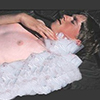
Heat Stroke – a physical condition caused by excessive heat and dehydration which prevents the body from regulating its temperature. Symptoms of heat stroke are high body temperature, lack of perspiration, disorientation, and in later stages, collapse, unconsciousness, and death. Any stage of heat stroke is an extremely dangerous condition and must be treated as quickly as possible by emergency medical personnel. Call 911 immediately.

Helmet – a form of personal protective equipment (PPE) worn on the head to provide protection to the skull and brain in the event of impact. Helmets should be worn to prevent head injuries when riding ATV’s, motorcycles, snow mobiles, and horses. Most construction sites require the use of hard hats, which can protect the worker from head injuries.

HEPA Filter – Refers to a High Efficiency Particle Absorbing filter used to remove particles from the air. In order to be called a HEPA Filter it needs to meet certain engineering standards. These filters are generally effective to capture most bacteria, but may not filter out all viruses.
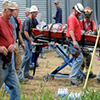
High Angle Rescue – an emergency first response strategy involving trained personnel using ropes and other equipment to extricate an entrapped victim. This approach is used to protect first responders from becoming secondary victims (see secondary victims).

Hydraulic – refers to operating by the flow of liquid, such as oil or water. Hot hydraulic oil and high pressures greater than 2500 PSI can cause serious injury to skin, muscle tissues, and eyes if a leak occurs. Hydraulic systems are used widely on modern agricultural equipment.

Hydraulic Cylinder – a cylinder with an internal piston and an external rod that extends and retracts by pressurized oil flow. Many farm implements are raised and lowered by hydraulic cylinders. A failure in a cylinder can cause a rapid, unexpected drop of an implement. Farmers should never perform maintenance under an implement supported by a hydraulic cylinder unless it is locked or blocked in the raised position.

Hydraulic Hose – a strong, flexible hose used to conduct high pressure oil from the pump outlet to remote locations. They are frequently found on agricultural equipment to carry oil from the tractor to hydraulic cylinders and pumps on various machines. Pin hole leaks in these hoses can cause penetration injuries to the skin. Care should be taken to prevent hydraulic hoses from contacting moving parts that can cause damage and leaks. Seek medical attention immediately if a penetration injury occurs due to a high-pressure leak.

Hydrogen – a lighter than air, colorless, odorless, highly-combustible gas with the chemical formula of H2. Since the presence of hydrogen gas during recharging of a battery creates an explosion hazard, efforts should always be made to prevent electrical shorts and sparks near a battery. Hydrogen was used in blimps such as the Hindenburg until its explosion and the catastrophic loss of life ended that practice. Batteries should be charged in a well-ventilated area.
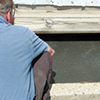
Hydrogen Sulfide – a heavier than air, colorless, very toxic, combustible gas that has the pungent odor of rotten eggs and has the chemical formula of H2S. This gas often occurs in manure pits in sufficient concentration to cause the death of a farmer or worker entering the pits. Two different farm families lost the lives of five members as they consecutively entered a manure pit in an attempt to rescue the previously fallen relative. A total of 10 individuals died in the two incidents.

Hygroscopic – referring to the process of moisture being absorbed by a substance from the atmosphere. Under high humidity conditions, road salt is hygroscopic and can cause roads to stay wet and less icy for long periods of time. Grain in a bin is hygroscopic which can cause the grain to go out-of-condition if exposed to moisture.
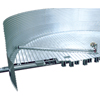
Infloor Auger – is an auger installed in a channel or tube under the floor of a grain bin to transport the grain that falls through the open wells in the floor of the bin. The auger conveys the grain to the outside of the bin. It is important that all openings or wells over infloor augers be guarded to prevent someone from stepping in the well and becoming entangled in the auger.
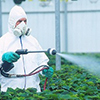
Inhalation Exposure – exposure to a hazardous substance that enters the body through the respiratory system. Breathing in the mist formed during pesticide application can be avoided by using a respirator approved by NIOSH for the particular pesticide being used. An N-95 dust respirator can be used to reduce inhalation exposure to dusts and molds when handling hay bales.

Inhalation Hazard – airborne material that can damage a worker’s health when breathed or inhaled. Inhalation hazards of dust, chemical vapors, pesticide fumes, and paint sprays can be avoided by the proper use of respirators to protect a worker’s health. Environmentally controlled cabs on farm tractors can reduce an operator’s exposure to inhalation hazards.

Injury – physical harm or damage to some part of the body. Farming is one of the most hazardous industries due to many potential sources of injury such as chemicals, machines, electricity, temperature extremes, large animals, confined spaces, and climbing. If there is any doubt concerning the severity of an injury, medical attention should be sought as soon as possible. Some minor injuries can become easily infected in farm settings.
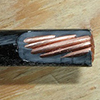
Insulated – refers to a material that does not conduct electricity. Insulated electrical wires and insulated plastic cases on hand power tools prevent electrical shock or electrocution of the tool operator. Electrical conductors with worn or damaged insulation should be replaced. Nearly all overhead high voltage power lines are uninsulated and pose a risk of electrocution.

Integral – an adjective meaning “essential to completeness.” In other words, it refers to an extremely important part of a machine. Shields are integral parts of all machinery to assure operator safety. The starter on an agricultural machine is an integral part of the machine that is essential to starting the engine.

Internal Combustion Engine – an engine that utilizes the explosive burning of fuel and air inside the engine to generate power The explosive nature of gasoline and diesel that make them valuable as fuel for an internal combustion engine in farm machinery also makes them the prime cause of farm machinery fires when fuel leaks occur. All internal combustion engines produce carbon monoxide during operation, and therefore must be adequately ventilated. For example, a power washer should never be operated in an unvented building.
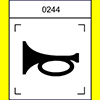
International Symbols – graphical images or symbols adopted by the International Standards Organization (ISO) that are used to communicate important information to operators of agricultural equipment. International symbols can be used to help identify operator controls for operators who speak and read different languages or for operators with a low level of reading skill.
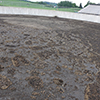
Lagoon – is an open, usually an inground storage site for liquid agricultural waste. It can be surrounded by a dike and in some cases is lined. It is recommended that waste lagoons be posted or fenced to prevent access by unauthorized individuals. Under the right conditions, open lagoons filled with animal waste can generate dangerous levels of toxic gases in the area immediate surrounding the lagoon.

Lanyard – a part of a safety harness that is designed to connect the harness to an appropriate anchor point or to a lifeline. Most current lanyards used as fall prevention systems include a fall arresting component that limits the distance the user will fall. Fall protection should be worn when completing some tasks on farms.

Lifeline – a tested rope, with appropriate connectors used to secure a worker from the risk of a life-threatening fall, or while accessing a confined space. Workers, for example, entering a Permit Required Confined Space, are required to wear a safety harness with a lifeline.

Livestock – animals kept for sale, raised for food or other products, or kept for use, especially farm animals such as beef and dairy cattle, pigs, and poultry. Large livestock, such as bulls and cows with calves can be very aggressive and cause serious injury or death to anyone in their path. Working safely with livestock takes training and experience.

Livestock Waste – the byproduct of the digestive system of livestock primarily made up of manure and urine. If allowed to decompose in an enclosed space, or confined space, this waste can generate toxic gases such as hydrogen sulfide and methane. On most farm operations, livestock waste is applied to the land as a soil conditioner and fertilizer.

Lockout/Tagout – a safety procedure used to lock out the supply of stored energy to a machine, preventing unintentional start-up. Prior to working inside a grain bin, the control to the unloading auger should be locked out to prevent start-up and injury to someone inside the bin. In most industrial applications, the power source must not only be locked out, but also tagged to warn any potential user that the equipment is out-of-service.
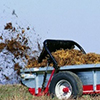
Manure – the urine and feces of animals, including their mixture with bedding material that is often used to fertilize land. Manure contains many types of bacteria that sometimes cause disease in livestock handlers. Manure stored in a confined space can produce a high concentration of hydrogen sulfide, ammonia, carbon dioxide, and methane which presents serious risks to anyone who enters the facility. See Manure Gas.
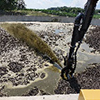
Manure Agitator – is a type of powered equipment used to break up or liquefied agricultural waste in order to allow it to be pumped through solid and flexible lines for transport or application. It is usually operated off the PTO of a tractor and consists of a long shaft with a spinning impeller or blade on the end of it that is lowered into a manure pit or waste lagoon. The crusted manure is broken up by the impeller and recirculated into the storage site forming a liquid slurry that can be pumped out for disposal. Since it is PTO operated, all operating components need to be kept guarded to prevent entanglement.
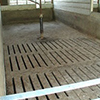
Manure Gas – a mixture of toxic gases that forms in a manure pit or in the space above the pit, commonly including methane, hydrogen sulfide, carbon dioxide, and ammonia. Hundreds of deaths have occurred from suffocation or asphyxiation in or near manure pits. Two cases involved the total of 10 deaths of which eight people entered a pit to rescue the previous victims. See www.agconfinedspaces.org.
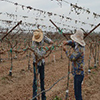
Manure Pit Foaming – is caused by the decomposition of livestock waste in a holding pit that generates gases that form bubbles or foam on the surface of the liquid waste. The foam can be generated more rapidly if the waste is agitated. Since the foam is formed by large concentrations of methane, it can be explosive or flammable. In some cases, the foam will rise through the slats in the floor causing the livestock to be exposed to toxic gases. There are additives available that can be added to the manure that reduces the probability of foaming.
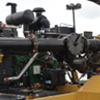
Manure Pumps – are designed to transport liquid livestock waste for storage or application. They are high powered, operated off electricity or the PTO of an attached tractor. Impellers are used to liquify the waste which allows it to be pumped through either flexible or solid hoses and lines. Since manure pumps operate at high pressure, the failure of a manure pump or any of its fittings can cause serious injuries to bystanders from flying debris.
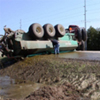
Manure Spill – is caused by the unintentional release of, usually liquid, manure into the environment. Spills can be caused by equipment failure, such as a hose breaks, or a transport vehicle crash on the highway. Manure spills can cause significant environmental damage if they reach sources of water in which fish or other wildlife are present. In most states there are in place regulations that require the reporting of manure spills to an authorized agency. Failure to report manure spills can result in fines.

Manure Spreader – a vehicle used to transport and spread livestock waste. It can be designed to transport solid or liquid waste with a variety of delivery or spreading systems. Most manure spreaders are towed by a tractor and are powered by either the tractor PTO or hydraulic system. Some units are self-propelled. A common type of manure spreader injury is entanglement in an unguarded PTO shaft. Since spreaders are used to transport manure on public roadways, they are frequently involved in motor vehicle crashes.

Methane – a colorless, odorless, combustible gas with the chemical formula of CH4. It is a very common gas found in natural gas, coal mines, bubbles in stagnant ponds, and manure pits. Methane must not be allowed to accumulate in high concentrations, or an explosion can occur. Livestock buildings have been destroyed when a build-up of methane gas caused an explosion.
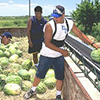
Migrant Agricultural Worker – a person employed in agricultural work on a temporary basis, who is required to be absent from his or her permanent place of residence. OSHA enforces regulations that require sanitary living conditions and safe work practices for migrant agricultural workers. See Seasonal Agricultural Worker.

National Institute for Occupational Safety and Health—NIOSH – the federal agency responsible for conducting research and making recommendations for the prevention of work-related disease and injury. NIOSH publishes news alerts to warn workers when it discovers a significant number of injuries occurring in a particular occupational task. To learn more about NIOSH visit www.cdc.gov/NIOSH.
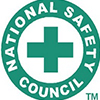
National Safety Council—NSC – a non- profit, non-governmental, international public service organization that develops training, educational programs and materials, consulting, and leadership for improving the safety, health, and environmental well-being of all people. The National Safety Council provides a tremendous amount of information on health and safety at www.nsc.org.
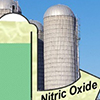
Nitric Oxide – a chemical gas consisting of one molecule of nitrogen and one molecule of oxygen, NO. Nitric oxide is formed during the fermentation of silage and then is quickly converted to nitrogen dioxide. Nitrogen dioxide is the major component of highly toxic silo gas that is formed in silos for approximately 21 days following the filling of the silo. Silos should not be entered during the fermentation process or only after adequate ventilation.
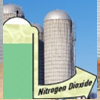
Nitrogen Dioxide – a toxic gas with the pungent and irritating odor of bleach and having the chemical formula of NO2. Nitrogen dioxide may be present in newly filled silos and is the major component of silo gas which can cause permanent lung damage or death when inhaled, even at very low concentrations. Silo gas is heavier than air and becomes concentrated in the feed room at the base of the silo.

Occupational Safety and Health Administration—OSHA – the agency within the United States Department of Labor that provides standards, regulations, inspections, and enforcement for the safety of workers. OSHA requires farms with more than ten employees to provide safety training annually and meet other worker safety and health requirements. For more information on how OSHA applies to agriculture visit www.OSHA.gov.
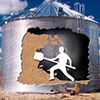
Out-of-Condition Grain – when grain is stored at too high of a moisture content, such as over 14%, there is a high risk of it spoiling and overheating. This results in damaged or out-of-condition grain that can become unstable or crusted together. The most significant contributing factor to grain entrapments and suffocations is out-of-condition grain.
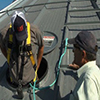
Outside Observer – a person, or persons, who is positioned outside of the access door to a confined space to ensure the safety of anyone entering the space. Under OSHA requirements, the outside observer must be trained to perform their required responsibilities, including maintaining visual or verbal contact with the person entering the space. An outside observer should never leave their position while someone is inside the space and be trained in appropriate emergency response steps in the event of a problem.

Oxygen-Deficient – an environment where there is a lower concentration of oxygen than in the earth’s atmosphere, usually at approximately 19%. Oxygen- deficient environments sometimes occur in manure pits, silos, fruit storage, and tanks. This condition requires workers to wear a self-contained breathing apparatus or to properly ventilate prior to entry. Federal law restricts youth under the age of 16 from being employed to work in oxygen deficient structures. The only way to be sure that the workspace is not oxygen deficient is to test it with a meter.

Paramedic – a person licensed and trained to provide emergency medical treatment. Paramedics work as part of an ambulance service or in an emergency room and take charge of patient care as soon as they arrive at an emergency scene.

Permit Required Confined Space (PRCS) – is an enclosed space large enough for a worker to bodily enter and perform assigned work, has limited or constricted means of entry or exit, and is not designed for continuous worker occupancy. Even though there are many spaces on farms, such as silos and manure pit, this legal definition does not apply to most agricultural workplaces.
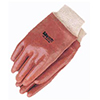
Personal Protective Equipment—PPE – equipment used to protect a worker’s body, such as goggles, gloves, ear plugs, dust mask, etc. Chemical manufacturers publish Material Safety Data Sheets which instruct chemical handlers regarding the use of appropriate PPE. Most major hardware stores carry a variety of PPE.

Pesticide – an agent used to kill or control pests. Herbicides, insecticides, and fungicides are examples of pesticides which can be harmful to life and health if not handled properly. The Environmental Protection Agency regulates pesticides under authority of the Federal Insecticide, Fungicide, and Rodenticide Act (FIFRA). Federal law prohibits youth under the age of 16 from being employed to handle, mix, or apply pesticides labeled with the words DANGER or WARNING. To learn more about the hazards of pesticides visit www.EPA.gov.

Pinch Point – a location on machinery where the danger of getting pinched occurs. The areas where belts go around pulleys and chains travel over sprockets are pinch points that have injured many farmers’ hands and fingers when shields have been removed for maintenance and not replaced.

Pinhole Leak – the leak of a fluid through a tiny hole having nearly the same diameter as that of a straight pin used in sewing. High-pressure oil spraying from a pinhole leak in a hydraulic hose can penetrate human tissue causing serious injury, infection, or gangrene, sometimes requiring amputation of affected extremities. Never use bare hands to locate leaks in hydraulic hoses. If an injury occurs seek medical attention immediately.
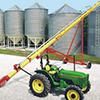
Portable Auger – an auger which has a metal wheeled framework that can be raised and lowered to fill storage bins of different heights, and can be transported to different farm locations. The safety grate over the intake of the rotating auger must always be in place to prevent injury if one should fall or step into the intake hopper. Portable augers are one of the leading causes of electrocution on the farm when they contact overhead power lines. See Auger.

Power Take Off (PTO) – an external shaft, usually on the rear of a tractor, which provides rotational power to implements. The PTO system consists of a stub shaft on the tractor and a drive shaft with a universal joint on each end. Most PTO guards used today are integral journal shield covering both the shaft and universal joints. Entanglements in the PTO driveline can cause severe or fatal injuries.

Pull-in Point – the location on machinery where the danger of being pulled into the machinery can occur. The gathering reel on a mechanical harvester has many aggressive components that form a pull-in point where a farmer can suffer serious injury or death. The engine should be turned off before working in close proximity of a pull-in-point.

Pump Pit – usually an inground concrete pit that is at a level lower than the area being drained. A pump is located in the pit to pump liquids away from the site. Most manure storage facilities utilize pump pits. Pump pits have been the scene of many asphyxiations because toxic gases settle into them.
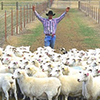
Ranch – a place for raising horses, beef cattle, sheep, or specialty animals. Many injuries occur on ranches when workers are stepped on, kicked, gored, crushed, or bitten by large animals. Ranches also contain many of the same hazards found on farms.
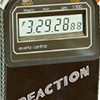
Reaction Time – the lapse of time between stimulation and response. Consumption of alcohol or certain drugs decreases one’s reaction time in an emergency situation, which is the cause of many alcohol related automobile injuries and deaths. Typical reaction time for a tractor operator to move his or her foot to the clutch pedal after recognizing a hazard is nearly three seconds.

Red Cross – a non-profit organization that provides medical and relief services for disasters all around the world. Red Cross is a good source of first-aid and CPR training. For more information visit www.redcross.org.

Regulations – rules or laws that control how people behave. Regulations adopted by the various federal and state legislatures are designed to protect youth in agricultural workplaces, prevent the misuse of agriculture chemicals, and improve the safety of public highways. The Hazardous Occupation Orders for Agriculture (HOOA), adopted in 1968, is an example of regulations that prevent youth under the age of 16 from being hired to perform certain hazardous tasks on a farm.

Respirator – the mask, filters, and, in some cases, air supply tanks that workers use to provide clean air for safe breathing. Respirators must be certified to meet strict safety standards. When applying pesticides that are restricted by the EPA, a respirator may be required. According to current OSHA regulations, respirator use requires specialized training, and may require approval by a physician. See www.CDC.gov.

Revolution – the turning of an object about a center point. One complete revolution returns the object back to the exact position of its starting point. Most older tractor PTOs operate at 540 revolutions per minute (RPM); newer tractors operate at 540 and/or 1000 RPM. See Revolutions Per Minute.
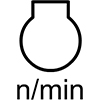
Revolutions Per Minute—RPM – the speed that a shaft rotates. The RPM speed of the crankshaft of an engine is often displayed on a tachometer, with unsafe operating speeds shown in red. Farm equipment is designed for PTO shafts to operate at either one of two speeds: 540 RPMs or 1000 RPMs.
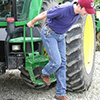
Risk – a potentially dangerous choice. Taking a risk increases the possibility of injury or harm. People will sometimes take a risk such as jumping off the steps of a tractor or combine in order to show-off or to complete a job more quickly. When mounting or dismounting a tractor or combine, always keep your belt buckle facing the machine.

Safety – the freedom from those conditions that can cause danger, risk, or injury. Car seats and seat belts greatly improve the safety of children and youth riding in cars and trucks that all states have laws requiring their use. Improving safety on farms and ranches requires constant effort to identify and remove hazards, or to protect workers from the hazards. Safety should be everyone’s job.

Safety Alert Symbol – a triangle with an exclamation point in the center. This symbol alerts machinery operators to a point of danger on machinery or a safety message in instruction manuals.
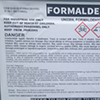
Safety Data Sheets (SDS) – information provided by the manufacturer of a pesticide or hazardous chemical that includes physical and health hazards, safety procedures, such as required personal protective equipment and first aid procedures. The SDS sheets should be readily available to all workers so that they can familiarize themselves with necessary safety precautions before handling or applying chemicals. These sheets are sometimes known as Material Safety Data Sheets (MSDS).

Safety Glasses – glasses that have been certified to meet safety standards for different work tasks, such as mixing chemicals or grinding. In factory environments where flying debris might enter the eyes, most employers require everyone in the production area to wear safety glasses. Farm workers should also wear safety glasses when performing tasks that could cause eye injuries. On some farms, it is standard operating policy for everyone to wear eye protection in the workplace at all times.
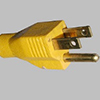
Safety Ground – a means of providing added protection from electrical shock by the addition of a ground wire. Two-prong adapters should not be used on power tools because they bypass the safety ground and could cause electrocution of a worker instead of a circuit breaker disconnect. See Grounding.

Safety Harness – a harness fabricated from straps, connectors, and an attachment point that is worn by workers, and is used in conjunction with a life line to prevent or reduce the severity of falls. Safety harnesses are also worn when workers enter confined spaces to allow for retrieval if something goes wrong. Use of safety harnesses requires specialized training. Also, at least one other person must act as an observer, especially when entering a confined space. No youth under the age of 18 can be employed to perform work requiring a safety harness or entry into a confined space.

Safety Interlock – a device to prevent starting an engine unless the transmission is in neutral, the clutch is disengaged, or the combination direction-and-speed- control is in neutral. The safety interlock prevents a farmer from standing beside a tractor and starting it in gear, avoiding potential run-over injuries and deaths.
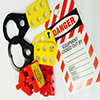
Safety Locks (Mechanical) – devices used to lock farm machinery in the raised position so that farm workers can safely work under the equipment for maintenance and repair. A steel U-channel pinned in place over the rod of a hydraulic cylinder provides the safety lock for a front-end or skid-steer loader.

Safety-Toed Shoes – safety shoes which have a steel plate or plastic composite over the toes. Safety-toed shoes prevent crushing injuries whenever a heavy object falls or is dropped on one’s toes. In some settings, non-metallic safety shoes are required to prevent sparks. Plastic composites are used in these shoes, instead of steel, to protect the feet.

Sanitizer – a chemical or cleanser used to kill bacteria and viruses. Sanitizers are frequently used in milking operations to help keep the milk supply free from disease. Most sanitizers can cause harm to skin if exposure is frequent. Protective gloves should be worn.
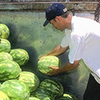
Seasonal Agricultural Worker – a person employed in agricultural work of a seasonal or temporary nature. Whereas a Migrant Agricultural Worker is required to be absent from his or her permanent place of residence, a Seasonal Agricultural Worker may or may not be so required. Seasonal Agricultural Workers are oftentimes not as skilled or experienced as full-time workers, receive less safety training, and incur more injuries. Seasonal workers deserve the same level of workplace safety provided to all workers.
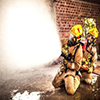
Secondary Victim – when an incident occurs that causes one or more additional individuals, who are acting as first responders, to become injured, these individuals are referred to as secondary victims. Workers attempting to rescue a victim trapped in a confined space such as a grain bin or manure pit can easily become entrapped or injured while attempting to assist the initial victim.
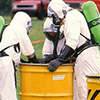
Self-Contained Breathing Apparatus (SCBA) – equipment designed to provide a worker with a safe supply of breathable oxygen while working inside a space with insufficient oxygen or a toxic environment. Silos, manure pits, certain grain storage structures, and incidents involving the release of anhydrous ammonia may require the use of SCBA. Use of this equipment requires specialized training and certification of fitness by a physician, and should never be assigned to youth under the age of 18.
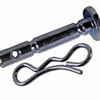
Shear Pin – is a bolt or pin that acts as a “weak link” in the power train. It is designed to fail, similar to a fuse or breaker in an electrical system, if the load on the power train become too great. Shear pins are important protective devices that can prevent serious damage to a machine that becomes plugged or overloaded. Shear pins should not be replaced with standard or hardened bolts.
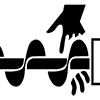
Shear Point – a location on machinery where a body part could be sheared off by one sharp component sliding very closely over another. The cutting bar of a sickle-bar mower and the space between the conveyor screw and tube of an auger are shear points where fingers can be amputated. A good example of a shear point is a pair of scissors.
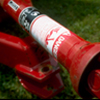
Shield – a guard that provides protection from a machinery hazard. The shield around a radiator fan protects a person from being injured by the rotating blades. Before using a grinder the shield should be in place and properly adjusted to prevent eye and hand injuries.

Short Circuit – an electrical circuit where an energized (hot) wire has come into contact with a neutral wire or a grounded component. Sparks and fires often occur because of a short circuit. To reduce the risk of short circuits, make sure the breaker box row is kept clean and always replace the box row cover after replacing a circuit breaker. If a breaker box row or receptacle feels hot, it should be checked by a qualified electrician. A short circuit can also occur in the electrical system of a tractor or combine.
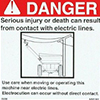
Signal Words – used to alert a product user of potential hazards. Signal words used to indicate the level of toxicity of a chemical are, from most to least toxic: DANGER-POISON, DANGER, WARNING, and CAUTION. Similar signal words are also used to indicate hazards found on farm equipment and facilities. There are several places on farms that have been determined to be extremely dangerous and are labeled with the DANGER signal word.
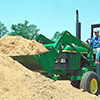
Silage – fermented grass, corn, and other roughage crops used for animal feed. As forage ferments into silage, the process produces silo gas that is a serious respiratory hazard. See Silo Gas. Packing silage in bunk silos with large tractors can place the operator at risk of rollover.
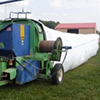
Silage Bagging System – a process of storing silage in long plastic bags filled using a silage bagging machine. An increasing number of farmers are using silage bags, which have proven safer and less expensive than tower silos that require frequent climbing. Some farms now use a similar bagging system for temporary storage of dry grain. Injuries have been reported from entanglements in the bagging equipment, which is either PTO-driven, or self-powered with a mounted engine.
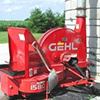
Silage Blower – a machine that fills silos by blowing silage up a tube to the top of a silo with a high-velocity stream of air. The large fan of a silage blower must be kept well shielded to prevent injury. A silage blower can be used to help ventilate the silo to dilute silo gas produced during the fermentation process. See Silo Gas.
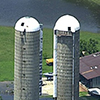
Silo – a tall, round, cylindrical structure used to store and ferment silage. Many safety precautions must be taken when climbing and working on silos which are commonly eighty feet or taller in height. The leading cause of injuries associated with silos is falls. During fermentation silage can produce toxic gases which cause asphyxiation. Youth under age 16 are prohibited by federal law from being employed to work in or on silos.
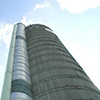
Silo Gas – a collection of gases produced during the fermentation of silage. The most toxic component is nitrogen dioxide, which is heavier than air and can cause asphyxiation and damage to the lungs. Silo gas can be present for up to 21 days following the filing of a silo. Entering the silo during this time should be avoided or performed only after extensive ventilation. See Nitrogen Dioxide.
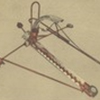
Silo Unloader – powered equipment used to remove processed silage from a tower or vertical silo. Some units are mounted on the top and have a long electrical extension cord providing electricity. Others are designed into the bottom. Both types may require service and therefore access into the silo presenting a confined space hazard to workers.
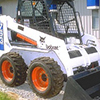
Skid-Steer Loader – a small, highly maneuverable front-end loader used to load materials at construction sites and farms. It is widely used on livestock farms to handle manure. Its small size and large lifting capacity make a skid-steer highly susceptible to overturns, and its use inside buildings creates a carbon monoxide poisoning risk. Skid-steer loaders used on farms should be equipped with FOPS to protect the operator from falling objects. The machines have also been involved in man run overs.
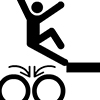
Slips and Falls – the loss of body control when one loses balance. Slips and falls are one of the leading causes of injury on farm and ranches. Keeping steps and platforms of tractors and combines free of mud and tools helps prevent slips and falls, as well as using handrails and maintaining three points of contact whenever climbing. Check all ladders regularly to ensure they are in good condition.
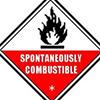
Spontaneous Combustion – self-ignition of a combustible material caused by the heat generated from a chemical reaction. Wet hay, wet grain, and silage can cause spontaneous combustion resulting in disastrous fires which can be extremely difficult to extinguish and actually smolder for many days. Workers should never enter a bin or silo that contains heating or smoldering material due to toxic air quality.
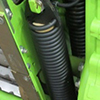
Spring – an energy storing device, used to keep belts tight, assist in lifting implements, and absorb shock. A heavy spring can store considerable energy that can cause serious injury if unexpectedly released by component failure or improper maintenance procedure.

Static Electricity – an electrical charge that can develop on an object due to friction. Lightning that travels between the clouds and the earth is an example of static electricity. When refueling a vehicle or filling a fuel container in the bed of a truck, the buildup of static electricity can cause a spark that could ignite fuel vapors. Place containers on the ground when filling with gasoline and touch the side of a vehicle before touching the fuel nozzle to discharge any static electricity away from concentrated fuel vapors.

Stored Energy – any form of energy that is stored. This includes chemical energy in a battery, potential energy in a spring, thermal energy in a hot engine, electricity, and kinetic energy stored in a coasting PTO shaft that can cause a serious entanglement injury. Before working on a machine, all sources of stored energy should be identified.

Stress – mental pressure, tension or strain from the response to physical, environmental, or emotional conditions that can cause fatigue or disease. Stress can cause a preoccupation with life’s problems which, in turn, creates a lack of concentration that can cause injuries and mishaps when operating machinery.
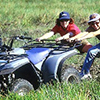
Stuck – being jammed or caught, or held in a position from which it is impossible to move. Farmers who experience being stuck in the mud or snow on a tractor, on an all-terrain vehicle, or in a truck need to exercise caution to prevent broken chains or overturns during the extrication process. Tow ropes and chains should be used with extreme care.
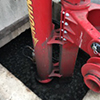
Sump Pit – a low point in a structure where water or other liquids can flow to by gravity and then removed by a sump pump. Sump pits, sometimes referred to as pump pits, can be found in buildings located in areas with high water tables or where there is large amounts of water used that needs to be removed. Sump pits are sometimes used in livestock buildings to collect liquid livestock waste. These spaces can accumulate toxic gases that have caused workers who enter the pit to service pumps or valves to be overcome.
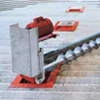
Sweep Auger – an exposed auger that is mounted in the base of a grain bin or silo that is designed to “sweep” the grain towards the center of the bin where it drops through the floor into an underfloor conveyor system for removal. No one should be inside the bin working when the sweep auger is operating. The risk of entanglement in sweep augers is high as is documented by the many injuries that have been reported.

Symptom – A change in normal physical functions that provides evidence of a disease. Examples include a fever that suggests an infection, a rash that might indicate exposure to a toxic material or joint pain that is caused by arthritis. A symptom is the body’s way of saying that something is wrong, and needs attention.
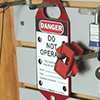
Tagout – a safety procedure used to label controls and warn others of a potential hazard if a machine were to be started. Tags are made of tear resistant materials and contain a certain message such as “DO NOT OPERATE” or “DO NOT OPEN.” Lockout/Tagout procedures should be used when anyone enters a silo or grain bin to perform maintenance. On some agricultural operations, OSHA requires the use of Lockout/Tagout procedures before entering a confined space.

Tetanus – an infectious disease that is caused by a bacterium often found in the soil and livestock manure. It can be fatal if not treated. It often infects humans through open wounds. Agricultural workers should be vaccinated to reduce the risk of becoming infected with Tetanus.
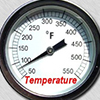
Thermal Energy – energy associated with the motion of molecules, atoms, or ions in a substance. The engines of tractors give off thermal energy from heat of combustion. An engine needs time to cool off and can remain hot for up to an hour after operation. When touching a hot muffler, it is the thermal energy that causes severe burns.
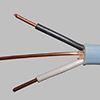
Three-Conductor, Grounded-Type Circuits – electrical circuits which use three conductors -- neutral, hot, and ground wires. All outlets in farm shops should be grounded-type circuits to reduce the risk of electrocution.
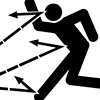
Thrown Object – an object that is thrown. A person standing near a rotary mower can be injured by objects thrown by the mower such as a rock, piece of wire, or part of a broken mower blade. Other farm machines that can cause thrown objects are forage choppers, straw choppers on combines, and chain saws. Machines that have the potential to throw objects such as a rotary mower are required to have a shield that will deflect the objects safely
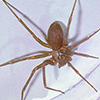
Toxic – relating to a toxin, or something poisonous. Left-over agricultural chemicals are toxic waste and must be discarded in an approved manner. The bite of a poisonous brown recluse spider hiding in a dark shed or a rattlesnake under a board on a ranch can inject toxic venom that can cause serious illness and even death. See Toxin.

Toxic Environment – surroundings (air, water, soil) that have been contaminated by toxins. The poisonous gases in a manure pit form a toxic environment that has killed many farm workers who were unaware of the danger when they entered manure pits without a self-contained breathing apparatus or proper ventilation. See Toxic and Toxin.
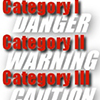
Toxicity – the degree to which a substance is toxic or poisonous. The toxicity levels of rat poison and insecticides are very high, therefore making them potentially fatal if swallowed. Federal law prohibits youth under the age of 16 from handling, applying, or mixing toxic chemicals labeled with the words DANGER/ POISON or WARNING. See Toxic.
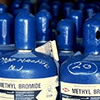
Toxin – any poisonous or harmful substance. Agricultural chemicals are toxins because they have the potential to be harmful if handled or applied without using proper safety procedures and personal protective equipment.

U.L. Label – a symbol found on electrical power tools and equipment that indicates that the tool has been tested by the Underwriters Laboratory. When buying a new power tool look for the U.L. Label.

Un-insulated – not insulated. High-voltage power lines are bare, uninsulated wires used to transport high-voltage electricity over long distances. Many injuries and deaths have resulted from electrocution when television antennas, augers, and ladders have contacted un-insulated overhead electrical lines.

Universal Symbol – graphical representation that is approved and adopted by an industry. For example, the rabbit and turtle icons that designate fast and slow on the throttle of a tractor are universal symbols that can be recognized regardless of a worker’s native language or reading ability.

Unloading Auger – the swing-out auger on a combine which is used to unload grain from the combine hopper. If the operator forgets to swing the unloading auger back into the transport position, collisions with electrical poles and trees may occur. In some settings, the unloading auger can make contact with overhead power lines potentially causing a fire or electrocution. See Auger.

Upwind – being in a position that is in the direction from which the wind is blowing. When spraying chemicals or working in a dusty setting, being upwind of the source can reduce inhalation exposure to toxic substances.

Vapor – Any substance that can become airborne or diffused into the air. Water vapor is comprised of tiny water droplets that can remain suspended in the air. Gasoline, paint thinner, and other flammable liquids can be vaporized presenting a serious risk of explosion if exposed to an ignition source.

Ventilation Fan – in order to reduce the buildup of toxic gases such as methane, carbon dioxide, or hydrogen sulfide, livestock buildings are designed with large powered fans that pull in fresh outside air and remove toxic air from the buildings. Without these fans being continually operated the air inside the structure can become toxic to both livestock and humans.

Virus – a living microscopic organism that can cause infectious diseases in human, livestock, and plants. There are many types of viruses, and they are constantly mutating into new forms. Rabies, COVID-19, and seasonal flue are diseases caused by virus. Virus organisms are so small that they can pass through most filters when airborne.
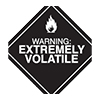
Volatile – A substance that is easily converted to a vapor (evaporated) at normal temperatures. The more volatile a chemical is, the faster it will evaporate. These vapors may be dangerous to agricultural workers and precaution should be used when working with in near proximity. Anhydrous ammonia and propane convert from a compressed liquid to a vapor very quickly.

Voltage – Pressure in an electrical system that pushes charged electrons. Most tractors have 12V electrical components, however 6V and 24V are also possible. Farm buildings may have electrical wiring that is 120V or 240V. Electricity is transmitted from a powerplant long distances at high-voltage (up to 400,000V).
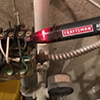
Voltage Detector – an electronic, usually hand-held device that detects the presence of flowing electricity in electrical wiring or receptacles. This device should be a part of every farmer’s toolbox row in order to prevent unintentionally contacting energized electrical components. Before any electrical work is done, all power must be locked out to prevent electrical shock.

Walking down grain – a practice, now considered illegal by the OSH Act, in which a worker is assigned to enter a bin in which grain is being unloaded to break up crusted gain or remove crusted grain from the walls. This activity is considered so hazardous that it is o longer allowed in the grain industry. It poses a high risk of flowing grain entrapment.

Warning – indicates a potentially hazardous situation that, if not avoided, could result in death or serious injury, including hazards that are exposed when guards are removed. It can also be used to alert against unsafe practices. The word “WARNING” on a chemical label indicates an intermediate level of hazard to the worker or the environment.

Water well – found on many farms, older water wells, often 30 feet deep, can result in a serious confined space entrapment. These old wells should be appropriately plugged to avoid anyone from falling into them.

Well – refers to either a source of water on a farm or rural home, or the opening in the bottom of a grain bin that allows the grain to flow out of the bin. If the well in a bin becomes plugged it can lead a worker to enter the structure to break up the plug, putting him or her at risk of entrapment. In some large grain bins there can be multiple wells. All wells in the floor of a grain bin should be guarded to protect anyone from contacting the mechanized components under the well that moves the grain out of the structure.

Whistle Blower Law – under the provisions of the OSH Act, a worker has the right to contact the state or federal Department of Labor to report unsafe work conditions without the fear of being punished by his or her employer. To learn more visit www.OSHA.gov.
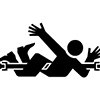
Wrap Point – a location on machinery where a person’s extremities, clothing or shoelaces can become wrapped. PTO operated machinery must have all guards and shields in place and in good working condition during operation to prevent entanglement at the wrap points along the PTO driveline.

Zerk – a fitting used to feed grease into a bearing or bushing. If grease is not routinely applied through the grease zerks of a machine according to the manufacturer’s maintenance schedule, machine failure, fire from an overheated bearing, and operator injury can occur.
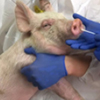
Zoonotic Diseases – diseases that can be transferred from animals to humas in natural ways. Zoonotic diseases can be transmitted to humans in a variety of ways: oral ingestion (mad-cow disease); bit wound (rabies); inhalation (anthrax); puncture wound (tetanus); scratch wound (cat scratch disease). Frequent hand washing and personal protective equipment (PPE) are used by veterinarians to reduce their exposure to zoonotic diseases.
